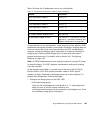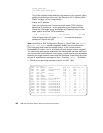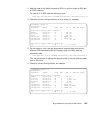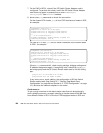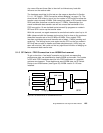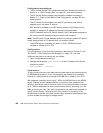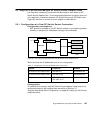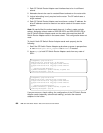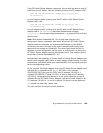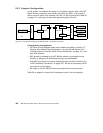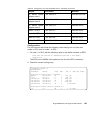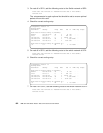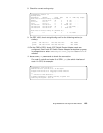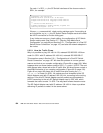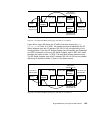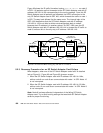Single RS/6000 SP and Single SP Switch Router 189
If the SP Switch Router Adapter cards work, the can both be used to route IP
traffic from the SP Switch. Add the following routes to the SP nodes of SP21:
route add -net xxx.xxx.xxx.xxx -netmask yyy.yyy.yyy.yyy -mtu \
zzz 192.168.14.4
to route outgoing traffic (coming from the SP node) via SP Switch Router
Adapter card 1 and:
route add -net xxx.xxx.xxx.xxx -netmask yyy.yyy.yyy.yyy -mtu \
zzz 192.168.14.129
to route outgoing traffic (coming from the SP node) via SP Switch Router
Adapter card 2.
xxx.xxx.xxx.xxx describes the destination network,
yyy.yyy.yyy.yyy the corresponding netmask and zzz a proper MTU size for the
chosen route.
Note:
With Ascend Embedded/OS 1.4.6.4 (and lower versions) this
configuration has an unpleasant side effect. When both SP Switch Router
Adapter cards are unfenced, the maintenance Ethernet and the RS232
connection are down. No login to the router is possible and existing login
sessions do not accept any command. The router itself works fine but no
changes in router configuration can be made. A workaround is to fence one
SP Switch Router Adapter card for maintenance work. This problem should
be solved in Ascend Embedded/OS 1.4.8.
Nevertheless, the possibility to choose which SP Switch Router Adapter card
should route outgoing traffic allows a certain degree ofload leveling. For best
performance, you should divide your expected traffic in to two equal parts and
set the corresponding routes.
So far, so good. But what happens when one SP Switch Router Adapter card
fails and why is it possible at all, to
ping 192.168.14.129, netmask
255.255.255.128, from node 6 in SP21 with IP address 192.168.14.1,
netmask 255.255.255.0? Node 6 in SP21 is able to reach the IP address
192.168.14.129 because this address is in the same subnet as its own IP
address. But the SP Switch Router Adapter card cannot reach node 6 in SP
21, because 192.168.14.1 is not in its subnet. So there is no way back and
ping should not work. But it works fine.
The next sections throw light on both questions.



